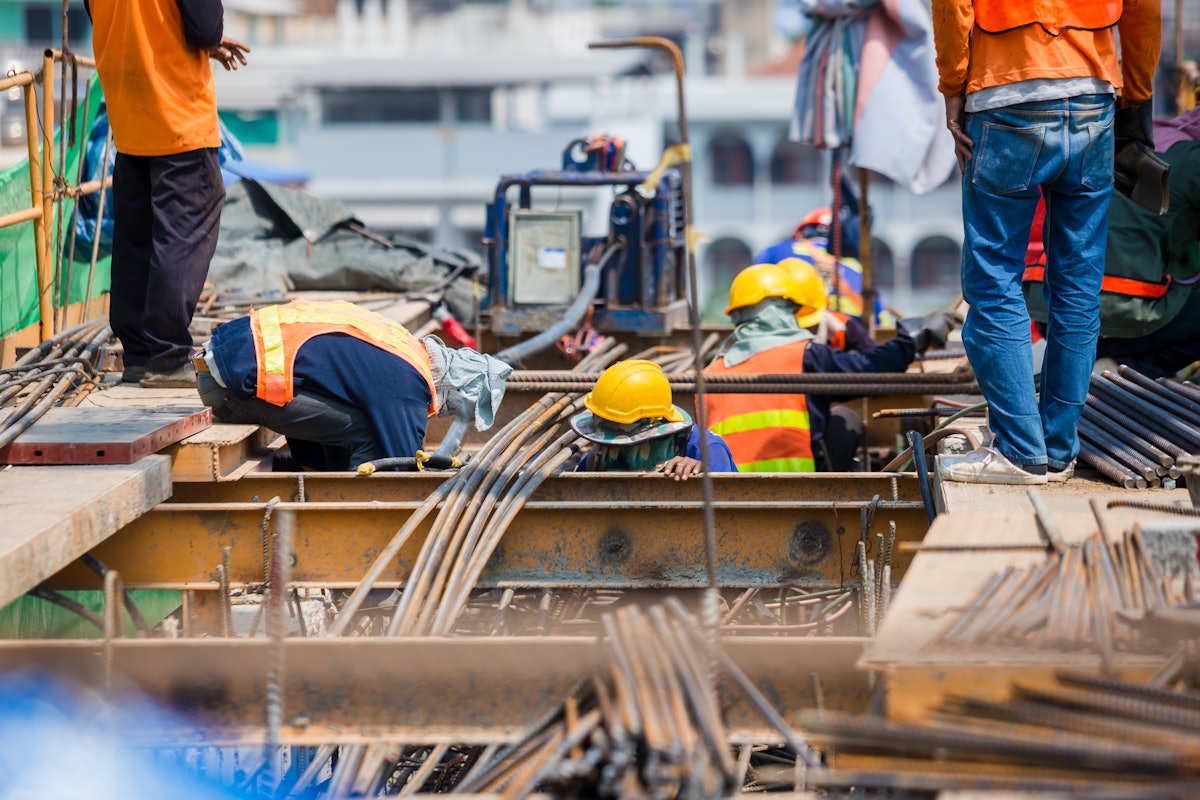In today’s hazardous workplace, safety remains a top priority– especially in construction, which consistently ranks as one of the most dangerous industries. In 2023 alone, construction experienced 1,075 fatal work injuries, the highest of any private industry sector[1]. The fatal injury rate stands at nearly three times the national average, at 9.6 per 100,000 full-time workers[2].
Slips, trips, and falls, are the leading cause of workplace injuries, and can result in traumatic brain injuries (TBIs) that have the potential to cause life-altering or even fatal consequences. In fact, the construction industry accounted for 47.4% of all fatal fall-related incidents in 2022 and leads all industries in both fatal and non-fatal workplace-related TBIs[3].
The Hidden Risk: Rotational Motion
While traditional safety helmets are designed to help protect against direct impacts, many construction site accidents actually involve angled impacts. For example, when a worker falls and hits their head, the impact typically occurs at an angle. These impacts have the potential to expose the head and brain to dangerous rotational motion– a combination of rotational forces (angular acceleration) and rotational energy (angular velocity) that can cause concussions or TBIs.
The brain is often more sensitive to rotational motion compared to linear motion caused by an impact. But despite the severe risks of rotational motion, according to a Nielsen report commissioned by Mips in 2022, 70% of American helmet buyers do not know what rotational motion is[4].
Proper Head Protection
Proper personal protective equipment (PPE) usage is critical to keeping construction workers safe. First and foremost, everyone should wear head protection that fits comfortably and securely. When selecting a helmet, an important thing to consider is whether or not it has a rotational motion mitigating system.
Many helmets are designed mostly to protect against impacts to the top of the head. Newer helmets, however, are evolving to address side impacts and rotational motion as well. One such system allows an inner layer inside the helmet to move relative to the wearer’s head during an impact. This intends to redirect the rotational motion away from the head in certain angled impacts, thereby lowering the risk of injuries like concussions and TBIs. Although helmets equipped with rotational motion mitigating systems are becoming more prevalent, awareness and adoption are still low.
The Compliance and Education Gap
A study conducted by J.J. Keller & Associates and the International Safety Equipment Association (ISEA) found that 90% of respondents are actively involved in making decisions related to head protection. Although there seems to be a high level of awareness, only 15% of them cited workers wearing head protection correctly at all times[5]. This highlights a clear gap even among those who are safety-conscious.
Safety Deserves Your Attention
Whilst the world around is ever changing, the need to prioritize workplace safety is constant. All industries and companies face adversities at some level and some point in time, whether they are battling the economy, managing delivery dates or budget cuts, dealing with challenging clients, or getting ahead on administrative issues, one should never take short cuts when it comes to safety.
On top of the physical and psychological implications injuries and accidents may have on your workers, OSHA has estimated that the average direct cost of a concussion, for example, is as much as over $54,000[6]. With some of the latest changes at NIOSH[7], it is important to emphasize that there remains a lot that can be done when it comes to keeping your workers safe on the job.
The Path Forward
To build a safer future in construction, the industry must first address its education problem—especially around head protection and the hidden dangers of rotational motion. Industry leaders, construction company owners, and project managers must clearly communicate potential dangers and foster a workplace of proactive learning and awareness.
Educating workers is not just about the importance of wearing helmets, but it’s also about learning that head protection has evolved. Today, there is technology available that offers additional safety for workers. As standards continue to evolve and new safety technologies emerge, prioritizing safety education and proper use of PPE will remain essential.
View the original article and our Inspiration here


Leave a Reply